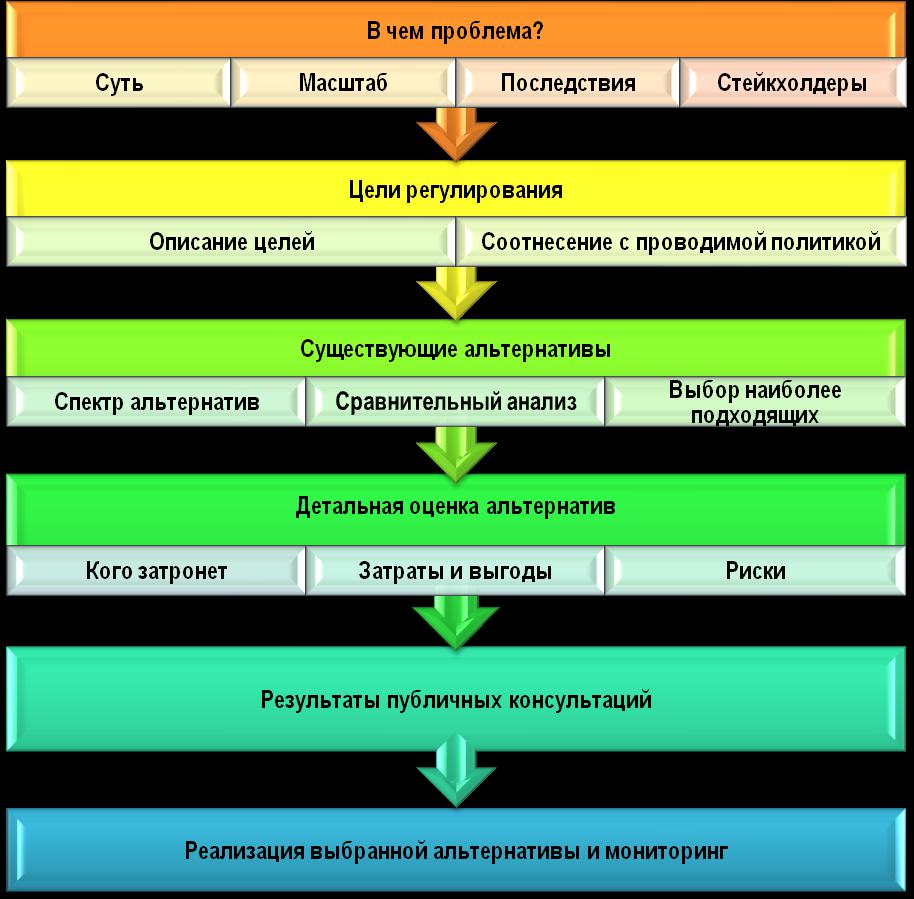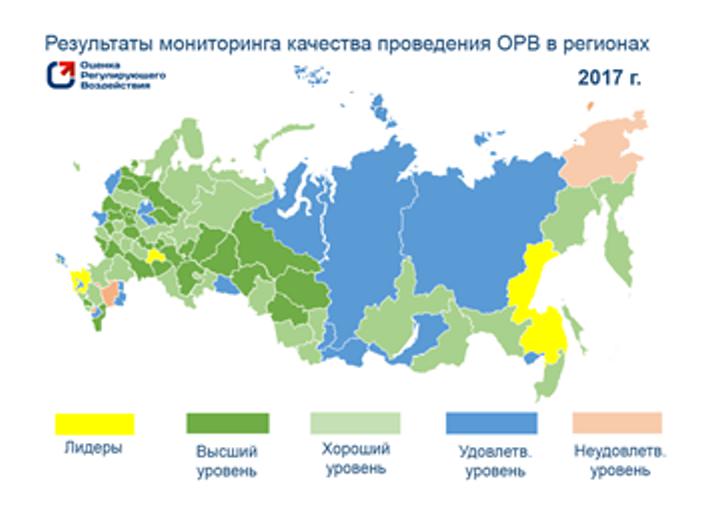We all want to find ourselves in a prosperous country with fair laws, where smart rulers make the right decisions. But how to recognize that governance is smart, laws are fair, and decisions are right?
Is there any magic algorithm for rulemaking to make our prosperity and at least a tolerable level of social justice possible?
Essence of the question
In economic terms: are there any ways to evaluate the correlation of our benefits and costs arising from the new regulations?
Regulatory impact assessment (ODS for short) makes this possible because it is a holistic systematic mechanism developed and implemented in the member countries of the Organization for Economic Co-operation and Development (OECD), specifically designed to evaluate managerial regulatory decisions (both positive and negative).
ODS - historical excursion
When discussing this problem in Western information sources, various terms are used, for example, Impact Assessment (IA), Regulatory Impact Assessment (RIA), Regulatory Impact Analysis, which are translated differently in our scientific literature: “impact assessment”, “analysis of regulatory influence” (abbreviated as ARV). There are also translation options: “regulatory impact assessment” and “controlled impact assessment”.

The concept of ODS, which emerged in the wake of neoliberal administrative reforms carried out by a number of countries at the end of the last century, has gone a long evolutionary path of development: from deregulation, that is, reduction of “overregulation” of small business, through the idea of “better / quality regulation” to the concept called “ smart regulation. ”
In Europe 2020, regulatory impact assessment is called a key element in the regulatory process.
ODS - European Commission definition
The 2009 European Commission large-scale document provides the following definition:
Impact Assessment (AE) is a set of logical steps that should be followed when preparing policy proposals. This is a process that prepares evidence for decision makers about the advantages and disadvantages of possible policy options by assessing their potential consequences. The results of this process are summarized and presented together with the OM report.
ODS in European countries is optional. Most countries consider it to be too complex an administrative and technical task and usually decides to conduct a regulatory impact assessment only when budget expenditures are required.

ODS - A Modern Understanding
In the modern sense, ODS is:
- A document that is used by politicians as evidence in making the final decision on the normative act under discussion.
- Specially designed tools to measure the degree of influence of all possible assessed factors (taking into account both quantitative and qualitative), for example, the well-known cost-benefit analysis, social discounting, etc.
- Methods for describing assessment mechanisms.
- The organizational system that prepares the necessary legal acts within the existing regulatory field and determines the scope of their coverage.
- Part of the newly created institute of “smart regulation”.
ODS is a complex and diverse phenomenon among global approaches to regulatory management.This is easily explained both by a different understanding of the principles of modern ODS, and by a large number of elements assembled into a single classical model.
Historically, almost all elements have gradually been included in this mechanism. Today, many new countries are continuously joining the ODS system, adapting and modifying in a certain way the classical model depending on their conditions, and since throughout its creation it was formalized by different regulatory acts, we end up with a wide range of options for the existence of the ODS system in the world.
Stages of ODS

The resulting report of the assessment of the regulatory impact of acts requires the inclusion of:
- Section 1. Describe the problem. To justify the need for state intervention to solve it.
- Section 2. Define the objectives of the intervention.
- Section 3. Identify existing alternatives (regulatory, etc.) of its solution. For a greater depth of research, you can study the existing foreign experience that is used to solve such problems.
- Section 4. Identify and pre-evaluate the costs and benefits of qualified alternatives. Assess the risks. Give a forecast of possible unwanted side effects. Compare alternatives, choose the option that is most relevant to your goals.
- Section 5. Conduct public discussions of the proposed solution with stakeholders. The results of the discussion lead in the report.
- Section 6. Develop a strategy for the implementation of the selected option, including monitoring for a given period.
The phased assessment of the regulatory impact of regulatory acts is illustrated by the scheme shown below.

As the scheme shows, almost all the processes used for ODS are quite complex, because they include a number of non-formalized procedures, for the implementation of which, first of all, you need:
- opinion polls of stakeholders (stakeholders) - all who are concerned about the proposed changes, and more specifically, certain groups of the civilian population and business;
- expert judgment to compare alternatives;
- knowledge of forecasting methods to track the effects of adoption of acts.
Therefore, for the successful implementation of all these procedures, sufficient funding and a certain level of qualification of the performers are necessary.
Since not all countries that want to introduce the ODS mechanism have the necessary resources for this, lighter versions of the procedure are being developed for them, such as RIA-Light, which differs from the classical one in reducing the number of regulatory acts and narrowing their scope.

Formation of the ODS Institute in Russia
To implement an optimal state regulatory policy, it is necessary to take such governing decisions, the actions of which will help maximize positive influences and minimize negative ones. In Russia, about 20,000 of all normative acts are adopted annually, and a considerable part of them can affect the interests of entrepreneurs.
Therefore, for the Russian Federation this problem is extremely urgent, because due to the lack of proper control, ill-conceived regulations appear and uncoordinated programs are adopted. According to S. Jacobs, a well-known specialist in the field of ODS, because of this, Russians are actually subject to an additional hidden tax, which amounts to 25% of GDP as a whole.

The problems of establishing institutions for assessing the regulatory impacts of regulatory acts (basic forms, implementation principles, etc.) in Russia are still under discussion. The official beginning of this mechanism of functioning at the Federal level should be considered the formation of the Department of ODS in 2010.
By order of the Ministry of Economic Development, ODS methods, the necessary forms and procedures for conducting public consultations were approved, and the federal portal for draft legal acts and the ODS information portal were put into effect.
From January 1, 2016, in place of the NAP expertise, the Rules for assessing the actual impact of the NAP were introduced, providing for an additional assessment of the regulatory impact of regulations that have already been adopted and are in force to eliminate provisions that impede business.

ODS in the regions of Russia
The main steps to implement measures for the implementation of ODS as a mandatory procedure for Russian lawmaking were taken after the Decree of the President of the Russian Federation dated May 7, 2012, No. 601, according to which the Government of the Russian Federation was instructed:
... until January 1, 2013, ensure the implementation of measures aimed at further improving and developing the institute for assessing the regulatory impact of draft regulatory legal acts, including:
... legislative consolidation of such procedures in relation to public authorities of the constituent entities of the Russian Federation - since 2014, local authorities - from 2015 ...
Today, the practice of conducting ODS has spread to the regional level - already 78 regions and some municipalities are beginning to implement it. However, according to the ODS quality rating, most regions have not yet reached the required level.

Challenges and Prospects
According to experts, the mechanisms for ensuring the assessment of the regulatory impact that have developed in Russia are not yet sufficiently developed. Many problems on further institutionalization of this sphere are still awaiting solution.
For example, the expansion of the practice of mandatory review of all regulatory acts is associated with projected risks. Given the high level of bureaucratization of management structures and the vast territory, there is a threat to find themselves in a situation called in theory the "institutional trap", when officials will write batches of formal reports on ODS without real elimination of obstacles to business.
To increase the effectiveness of the proposed regulatory impact assessment mechanism, it is necessary to radically limit the number of documents analyzed, for example, to those recognized by the majority as socially significant. For this, there is such a stage in the ODS mechanism as conducting public discussions. Now they are carried out purely formally.
An important area is the further simplification and typification of assessment procedures, the creation of an extensive evidence base of existing examples of the effectiveness of ODS of already adopted laws. An example of such a base is the “Library of Best Practices” of the European Commission.
